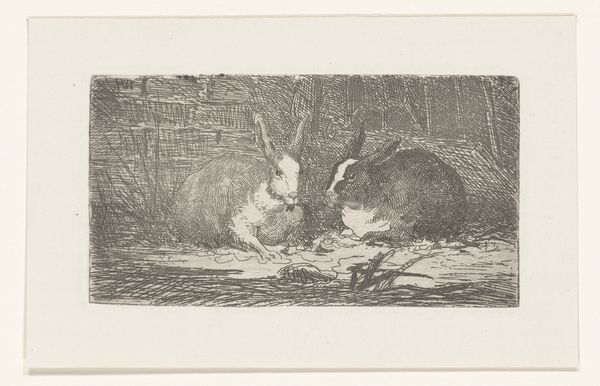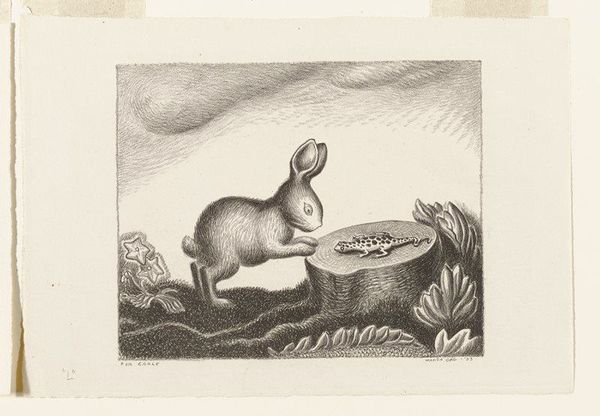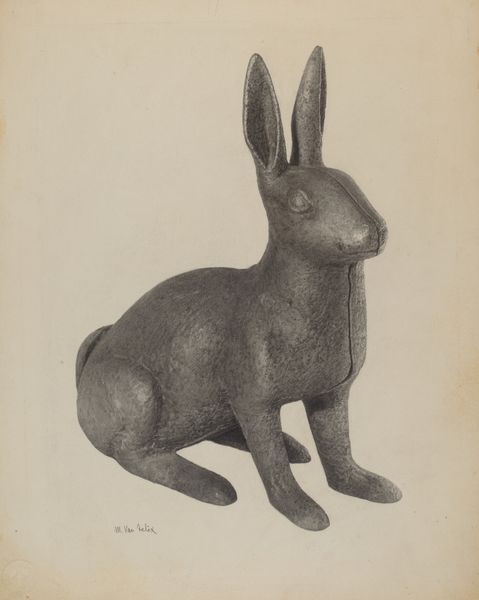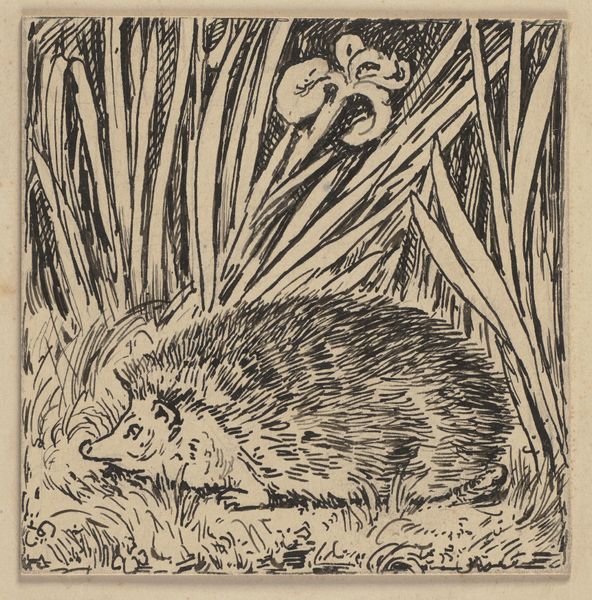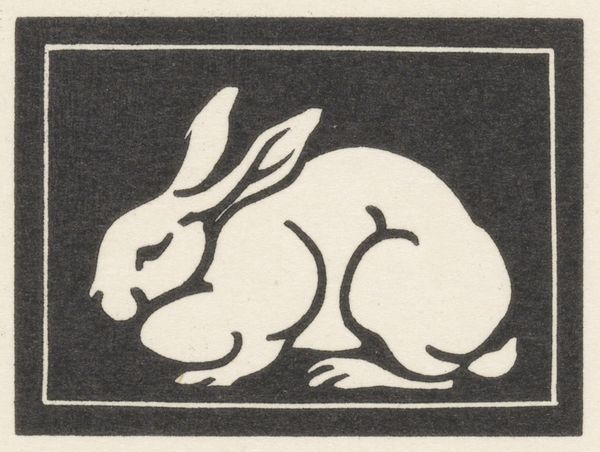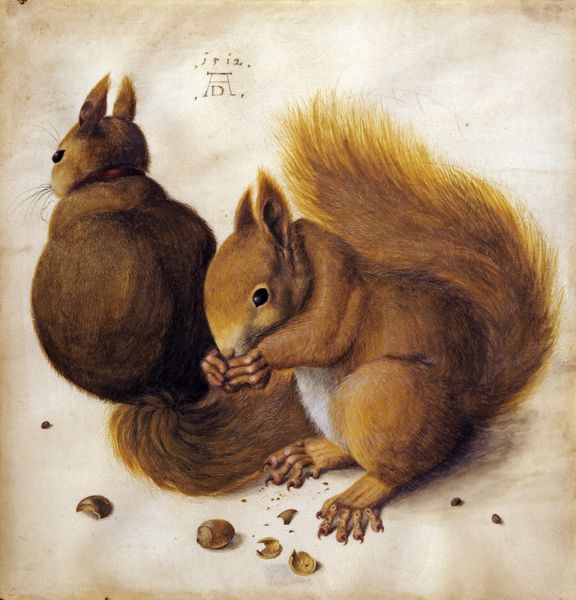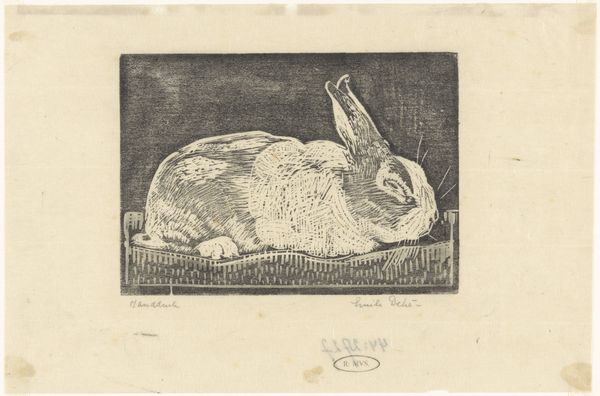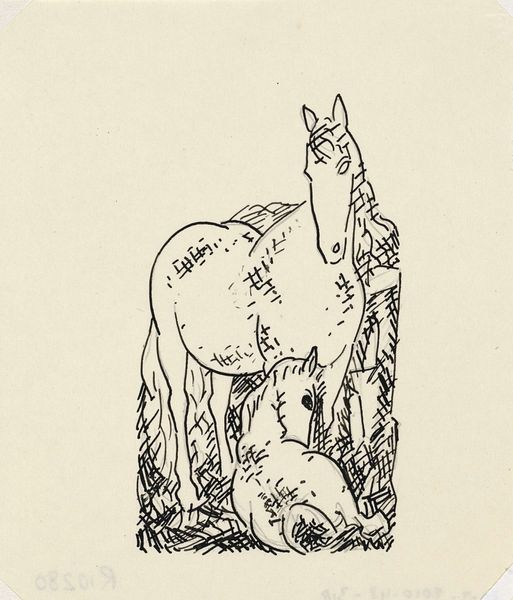
To harer (kaniner?) på sort baggrund. Dekorativt udkast. 1817 - 1875
0:00
0:00
drawing
#
portrait
#
drawing
#
realism
Dimensions: 109 mm (height) x 107 mm (width) (bladmaal)
Curator: Here we have "Two Hares (Rabbits?) on a Black Background. Decorative Sketch," a drawing by P.C. Skovgaard, created sometime between 1817 and 1875. It resides here at the SMK, the National Gallery of Denmark. Editor: It has the strange dreamlike quality. Almost unsettling. The flat black background really throws the hares into stark relief. And are they rabbits, or hares? Why the question mark, I wonder? Curator: Indeed. Skovgaard was primarily known as a landscape painter, a central figure in the Danish Golden Age. This work differs markedly, exhibiting his engagement with animal studies, possibly influenced by the scientific and natural history illustrations of the time. Note how the black backdrop recalls the aesthetic of mounted specimens displayed in natural history museums. Editor: Right. Almost like two separate specimen. Look, though, at the almost human expression on the upright hare – the way its paw is raised feels almost like it’s gesturing. It looks simultaneously startled and intensely curious, it triggers such a strong emotional chord within me. It speaks to our relationship with nature itself – observing nature, being observed by it! Curator: Skovgaard's rendering evokes realism through a blend of observed detail and artistic license. This duality reflects a broader tension between scientific accuracy and Romantic interpretation in depictions of the natural world during the 19th century. He was probably working on multiple naturalist pieces and this artwork shows him capturing an individual, a personality. Editor: The drawing looks quite muted to me. It feels like a scene from a fairytale, somehow incomplete, pregnant with untold stories. Or a rediscovered page torn from an alchemist's lost journal. Curator: An interesting perspective! By displaying an exploratory study like this, museums demonstrate how the aesthetic of realism intertwines with its historical contexts in often unforeseen ways. The way artwork influences culture is ever surprising. Editor: Yes! Perhaps sometimes all we really want to capture through art is a raw feeling or, rather, capture something that, for us, is more important than perfection itself!
Comments
No comments
Be the first to comment and join the conversation on the ultimate creative platform.



